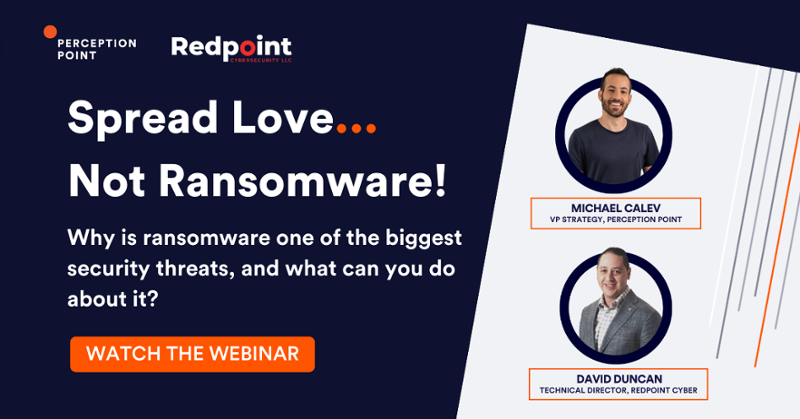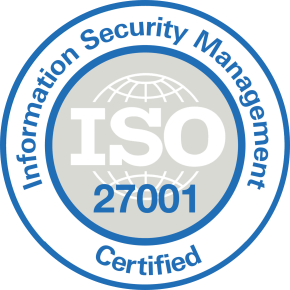What Is Ransomware Attack Protection?
Ransomware is a type of malicious software that encrypts a victim’s files. The attacker then demands a ransom from the victim to restore access to the data upon payment. Ransomware protection, therefore, refers to measures taken to prevent, detect, and respond to these types of attacks.
Ransomware protection is not just about installing anti-malware software on your systems. It is a comprehensive approach that involves implementing security best practices, educating employees about ransomware threats, backing up data regularly, and having a response plan in place in case an attack occurs.
This approach is crucial because ransomware attacks are becoming increasingly sophisticated and widespread. They can cause significant damage not only to your data but also to your business reputation and bottom line. If you do not have ransomware protection in place, you are at risk of losing access to your data and potentially paying large sums of money to get it back.
In this article
How Do Ransomware Attacks Happen?
Ransomware attacks typically begin with an initial infection vector, which is the method attackers use to gain access to a victim’s system. Common vectors include:
- Phishing emails: Attackers send emails that appear legitimate but contain malicious links or attachments. Once clicked or opened, the malware is downloaded and executed on the victim’s system.
- Malicious attachments: These are files attached to emails that, when opened, deploy the ransomware. Common file types used include Word documents, PDFs, and executable files.
- Compromised websites: Visiting a compromised or malicious website can result in a drive-by download, where the ransomware is automatically downloaded and installed without the user’s knowledge.
- Software vulnerabilities: Attackers exploit weaknesses in outdated or unpatched software to gain unauthorized access to systems. This method often involves scanning networks for vulnerable applications and deploying ransomware once access is achieved.
Once inside the system, the ransomware encrypts files, rendering them inaccessible. The attacker then demands a ransom, typically in cryptocurrency, in exchange for the decryption key. Without this key, recovering the encrypted data is nearly impossible.

Tal ZamirCTO, Perception Point
Tal Zamir is a 20-year software industry leader with a track record of solving urgent business challenges by reimagining how technology works.
TIPS FROM THE EXPERTS
- Implement a zero-trust architecture
Move beyond traditional perimeter security by adopting a zero-trust model, where every access request is authenticated, authorized, and encrypted, regardless of where it originates. - Integrate behavior-based detection
Complement signature-based detection with behavior-based analytics that can recognize ransomware by identifying unusual activities, such as mass file encryption or abnormal file renaming patterns. - Use application whitelisting
Implement application whitelisting to control which programs can run on your network. This prevents unauthorized applications, including ransomware, from executing. - Conduct regular simulations and exercises
Simulate ransomware attacks through exercises involving key stakeholders, including IT, legal, PR, and executive teams. This helps in identifying weaknesses in your prevention and incident response plan.
The Importance of Ransomware Protection
Data Security
Data is the lifeblood of any business. It is the foundation on which decisions are made and strategies are formed. In the hands of cybercriminals, however, this data can be used to cause immense harm. Ransomware attacks can lock you out of your data, making it impossible to carry out your business operations.
Even worse, some forms of ransomware not only encrypt your data but also steal it. This means that your sensitive business information could potentially end up in the hands of competitors or sold on the dark web.
Business Continuity
A ransomware attack can grind your business operations to a halt. If you can’t access your data, you can’t serve your customers, process transactions, or carry out any other business functions. This can result in significant revenue loss and potentially even lead to business closure.
Ransomware protection helps ensure business continuity by preventing attacks and enabling quick recovery if an attack occurs. With a solid backup strategy and a well-planned response plan, you can restore your systems and data quickly and minimize downtime.
Cost Savings
The cost of a ransomware attack can be astronomical. Apart from the ransom amount demanded by the attackers, you also have to consider the cost of downtime, data recovery, system restoration, and potential legal liabilities. By investing in ransomware protection, you can avoid these costs.
Customer Trust
In today’s digital age, customers expect businesses to protect their data. A ransomware attack can lead to a breach of customer data, which can severely damage your reputation and erode customer trust. Investing in ransomware protection shows your customers that you take data security seriously, and helps build trust and loyalty.
Common Use Cases for Ransomware Protection
Financial Services
Financial institutions are prime targets for ransomware attacks due to the sensitive and valuable data they handle. Attackers often target banks, investment firms, and insurance companies to disrupt operations and extort large sums of money.
Ransomware protection in this sector involves rigorous security measures, including robust encryption, multi-factor authentication, and continuous network monitoring. Additionally, financial services organizations must comply with strict regulatory requirements, making it essential to implement comprehensive cybersecurity frameworks.
Healthcare
The healthcare sector is particularly vulnerable to ransomware attacks due to its reliance on access to patient data and critical systems. Hospitals, clinics, and other healthcare providers face immense pressure to restore services quickly during an attack to ensure patient safety.
Ransomware protection for healthcare involves implementing strong access controls, regular software updates, and comprehensive backup strategies. Ensuring compliance with healthcare regulations like HIPAA is also crucial, as breaches can result in significant legal and financial consequences.
Education
Educational institutions, from K-12 schools to universities, are frequent targets of ransomware attacks. These attacks can disrupt learning, compromise sensitive student and faculty data, and lead to substantial recovery costs.
Ransomware protection in the education sector includes deploying advanced threat detection systems, conducting regular security audits, and maintaining up-to-date backups of critical data. Educating staff and students about cybersecurity best practices, such as recognizing phishing emails and securing devices, is also essential.
Government
Government agencies at all levels are attractive targets for ransomware attackers due to the critical nature of their services and the sensitive information they handle. Ransomware attacks on government entities can disrupt public services, compromise national security, and erode public trust.
Protecting government systems involves implementing stringent security protocols, such as zero-trust architecture, continuous monitoring, and regular vulnerability assessments. Ensuring robust backup and disaster recovery plans are in place is crucial for maintaining continuity of operations.
7 Ways to Protect Your Business Against Ransomware
The best ransomware protection strategy involves a multi-layered approach. The following are important elements to consider adding to your strategy:
1. Backup and Recovery Strategies
One of the most effective lines of defense against ransomware is a sound backup and recovery strategy. By regularly backing up your data, you can restore your systems to their state before the ransomware attack occurred. This is especially important for businesses, as losing sensitive data can have serious financial and reputational implications.
When implementing a backup strategy, it’s crucial to store your backups in a secure location. This could be an offsite location or a cloud storage service with strong security measures in place—taking care that backups are not accessible from production networks, so that ransomware does not infect them as well. Additionally, it’s recommended that you perform regular tests to ensure your backups can be successfully restored.
Lastly, it’s crucial to have a recovery strategy in place. This involves developing a detailed plan outlining the steps to be taken in the event of a ransomware attack. The faster you can recover your systems and data, the less damage your business will sustain.
2. Patch Management and Software Updates
Cybercriminals often exploit vulnerabilities in outdated software to deploy ransomware. Therefore, keeping your software up-to-date is a crucial step in preventing ransomware attacks.
To effectively manage software updates, it’s recommended that you implement a patch management system. This system should automatically download and install updates, minimizing the chance of human error. Additionally, it’s crucial to prioritize updates for software that handles sensitive data or is commonly targeted by cybercriminals.
3. Endpoint Protection Solutions
Endpoint protection solutions are an essential part of a comprehensive ransomware protection strategy. These solutions protect your network’s endpoints, such as laptops and mobile devices, from cyber threats.
Endpoint protection solutions typically include antivirus software, a firewall, and intrusion detection systems. They can help detect and block ransomware before it infiltrates your network. Additionally, many endpoint protection solutions offer features such as file encryption and data loss prevention, adding an extra layer of security to your network.
4. Email Security Solutions
Email is a common entry point for ransomware. Therefore, implementing robust email security solutions is crucial for preventing ransomware attacks. These solutions can include spam filters, phishing detection systems, and email encryption tools.
Spam filters block suspicious emails from reaching your inbox, reducing the chance of you or your employees clicking on a malicious link or attachment. Phishing detection systems, on the other hand, can identify and block emails that attempt to trick you into revealing sensitive information.
5. Browser Security Solutions
Browser security is another critical aspect of ransomware protection. Cybercriminals often use malicious websites to deploy ransomware. Therefore, enhancing your browser’s security can significantly reduce your risk of a ransomware attack.
Browser security solutions include features such as URL filtering, pop-up blocking, and script control. These features can prevent you from accessing malicious websites or downloading dangerous files.
6. Threat Intelligence and Information Sharing
Threat intelligence and information sharing are powerful tools in the fight against ransomware. By staying informed about the latest ransomware threats and sharing this information with others, you can proactively protect your business.
This can involve subscribing to threat intelligence feeds, participating in cybersecurity forums, or joining information sharing and analysis centers (ISACs). These resources can provide you with valuable insights into new ransomware variants, attack methods, and mitigation strategies. Threat intelligence can also be integrated into other types of security solutions, such as endpoint security and email security.
7. Deploying Advanced Threat Protection Tools
Lastly, deploying advanced threat protection tools can significantly enhance your ransomware protection. These tools use sophisticated techniques such as machine learning and behavioral analysis to detect and block advanced threats.
Advanced threat protection tools can identify suspicious behavior that traditional security measures might miss. For example, they can detect if a file is attempting to encrypt your data, a common ransomware behavior.
Learn more in our detailed guide to ransomware protection service
Developing a Ransomware Incident Response Plan
In addition to implementing robust ransomware protection measures, it’s crucial to have a ransomware incident response plan. This plan should outline the steps to be taken in the event of a ransomware attack, including:
Identifying Key Personnel and Roles
The first step in developing an incident response plan is identifying key personnel and their roles. This includes your IT team, who will be responsible for detecting and mitigating the ransomware attack, as well as your legal and PR teams, who will handle any legal issues and communication with stakeholders.
In addition to your internal team, it’s also important to identify external resources that can assist in your response efforts. This can include cybersecurity consultants, law enforcement agencies, and regulatory bodies.
Establishing Communication Procedures
Effective communication is crucial in the event of a ransomware attack. Therefore, your incident response plan should outline clear communication procedures.
This includes determining who should be notified in the event of an attack, how they should be notified, and what information should be communicated. Additionally, it’s important to have a plan for communicating with external stakeholders, such as customers and partners.
Incident Containment and Eradication
Once a ransomware attack is detected, your priority should be to contain and eradicate the threat. This involves isolating affected systems to prevent the ransomware from spreading, identifying the ransomware variant, and removing it from your network.
It’s important to note that ransomware eradication can be a complex process. Therefore, it’s crucial to have skilled IT professionals or external cybersecurity consultants handle this process.
Recovery and Restoration of Operations
After the ransomware threat has been contained and eradicated, the next step is to recover and restore your operations. This involves restoring your systems and data from your backups and ensuring that all traces of the ransomware have been removed.
Learn more in our detailed guide to ransomware prevention
Ransomware Prevention with Perception Point
Perception Point delivers one platform that prevents malware, ransomware, APTs and zero-days from reaching your end users.
Advanced Email Security is an integrated cloud email security solution (ICES) that can replace SEGs. The solution cloud-native SaaS solution protects your organization against all threats using 7 layers of advanced threat detection layers to prevent malicious files, URLs, and social-engineering based techniques.
Advanced Browser Security adds enterprise-grade security to your organization’s native browsers. The managed solution fuses browser protection technology with multi-layer advanced threat prevention engines which delivers the unprecedented ability to detect and remediate all malicious threats from the web, including phishing, ransomware, malware, APTs, and more. Multi-layered static and dynamic detection capabilities instantly detect and block access to malicious/phishing websites and prevent malicious file downloads of ransomware, malware, and APTs.
Advanced Threat Protection for Cloud Collaboration, File Sharing and Storage Applications, such as Microsoft 365 applications (OneDrive, SharePoint, Teams), Google Drive Box, AWS S3 buckets, Zendesk, Salesforce, and any of the other hundreds of apps out there, protects your organization with near real-time dynamic scanning. It does not tamper with files and does not impede on productivity.
An all-included managed Incident Response service is available for all customers 24/7 with no added charge. Perception Point’s team of cybersecurity experts will manage incidents, provide analysis and reporting, and optimize detection on-the-fly. The service drastically minimizes the need for internal IT or SOC team resources, reducing the time required to react and mitigate web-borne attacks by up to 75%.
Get a demo today!

Ransomware protection refers to measures taken to prevent, detect, and respond to these types of attacks. Ransomware protection is not just about installing anti-malware software on your systems. It is a comprehensive approach that involves implementing security best practices, educating employees about ransomware threats, backing up data regularly, and having a response plan in place in case an attack occurs.
Ransomware is important for various reasons, including:
– Data Security
– Business Continuity
– Cost Savings
– Customer Trust
The best ransomware protection strategy involves a multi-layered approach. The following are important elements to consider adding to your strategy:
1. Backup and Recovery Strategies
2. Patch Management and Software Updates
3. Endpoint Protection Solutions
4. Email Security Solutions
5. Browser Security Solutions
6. Threat Intelligence and Information Sharing
7. Deploying Advanced Threat Protection Tools
In addition to implementing robust ransomware protection measures, it’s crucial to have a ransomware incident response plan. This plan should outline the steps to be taken in the event of a ransomware attack, including:
– Identifying Key Personnel and Roles
– Establishing Communication Procedures
– Incident Containment and Eradication
– Recovery and Restoration of Operations
























